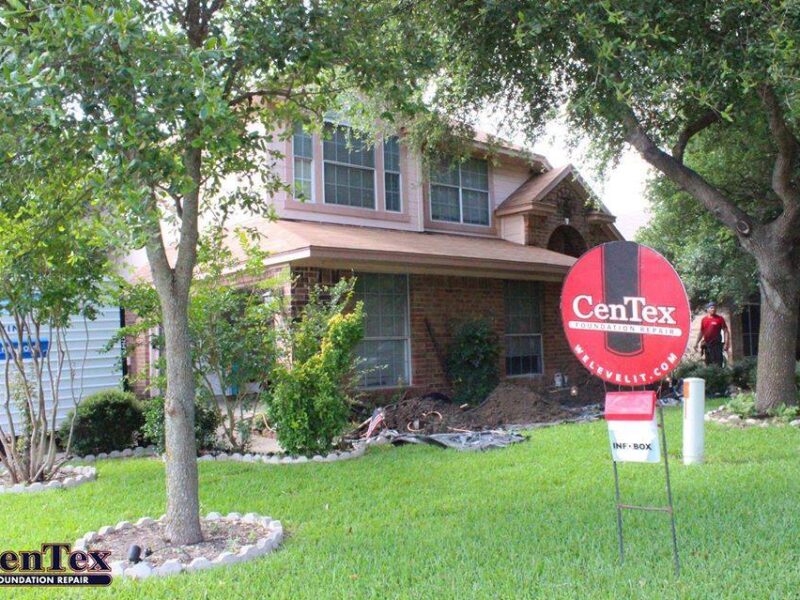As the summer season rolls around, you may already feel the heat! But many homeowners need to realize that with searing temperatures come an increased chance of your home’s foundation experiencing problematic damage due to extreme weather conditions. So let’s explore this issue together by looking at why hot summer weather can lead to serious foundation issues and how you can best safeguard your property’s foundation before it’s too late. From structural cracks appearing in walls and floors to width-wise expansion that can cause shifting foundations, understanding these dangers will help you protect your most significant investment from a sudden disaster.
What are the Signs of Foundation Damage due to Heat?
Heat and extreme temperature changes can cause severe damage to a home’s foundation. Predicting the full extent of the damage requires professional inspection, but you can look for sure warning signs that may indicate that your foundation is at risk. If you notice warped flooring, gaps between walls and floorboards, uneven stairs, or sticking door frames, this could indicate that heat also caused foundation damage. Areas near garden beds or flower pots that have cracked around the edges indicate that the soil has expanded due to heat in those areas. Other signs may include doors and windows having difficulty opening or closing along their edges or cracks in brick or stone façade on the exterior of your home due to the expanding soil below it.
How to Inspect for Foundation Damage During the Summer?
With the increased temperatures and rainfall, summer is the perfect time to keep an eye on your foundation. Inspecting for signs of water damage on a foundation should be done every season to ensure it is still solid and stable. To do that, check your home’s foundation for any cracks or surface damage, paying particular attention to mortar along brick joints. Also, inspect windows, doors, and other framings for signs of warping or decay. If you have any vegetation around your foundation, such as bushes or trees, make sure their roots are close enough, leading to the long-term stress of your foundation walls by having them professionally trimmed. Finally, if you see any pests like termites or carpenter ants near your house’s ground floor or basement, quickly arrange a pest control treatment, as they will kickstart further damage to your foundation.
Causes of Foundation Problems in the Summer
During the hot summer months, foundation problems can become magnified. Summer’s heat and dryness can cause cracks in your home’s foundation, resulting in costly repair bills. But there are some proactive measures you can take to help protect your foundation from the elements. For example, ensuring all trees, shrubs, and other plants near your home’s foundation remain correctly hydrated can help reduce unnecessary pressure caused by soil shrinkage due to a lack of moisture. Additionally, you should inspect the soil grade around your home for proper drainage and ensure any window wells or gutters nearby are in working order. Taking these precautions in the early portions of summer will go a long way toward maintaining a stable and secure foundation for your home throughout the season.
Prevention and Solutions for Foundation Problems
Foundation problems are an issue that should not be taken lightly, as they can cause significant structural damage to your home if left unresolved. It is essential to take steps towards prevention—regularly check for any cracks in the foundation and address them immediately with a professional contractor. If stormwater exposure is causing erosion of the surrounding soil, ensure your gutters and downspouts are working correctly to move water away from the foundation. Sealing the exterior walls can help prevent damage caused by water infiltration. Suppose you already have significant damage due to neglected foundation issues. In that case, deeper solutions, such as underpinning certain foundation parts or installing drain tiles around its perimeter, may be required. A qualified contractor will be able to assess what needs to be done and ensure that any repairs are done correctly to preserve your home’s structural integrity.
Final Reminders
With the hot summer months well underway, it’s important to take extra measures to protect your home from the potential damage that warm temperatures can cause. A house with a slab foundation can easily be impacted by changes in external heat levels, making it vital to pay attention to any signs of cracking or movement. The most common issue with foundations during hot weather is called “heave,” where there are strong shifts in the soil underneath, causing movement of the concrete up and outward. It’s also important to make sure that you’re watering your lawn and flower beds regularly as this will help keep the soil moist, which helps reduce heave. Monitor your basement walls closely for any signs of moisture, and do not overburden old foundations with heavy furniture. Such proactive actions should give you confidence in protecting your foundation against conditions brought about by hot weather.
